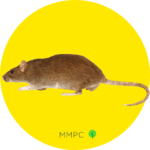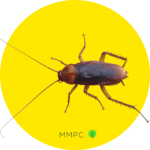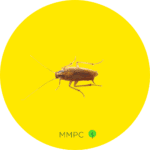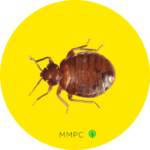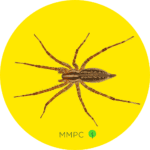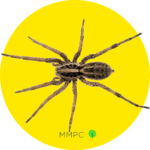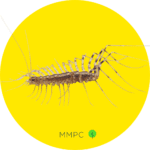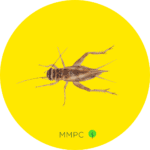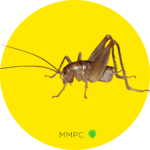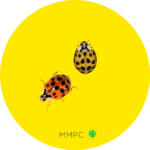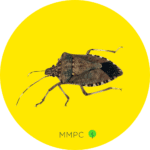
The fall season in New York lasts from September to November each year. During this time, temperatures will slowly decline, drawing pests indoors into buildings, houses, and apartments.
After all, climate-controlled homes are too good of a survival opportunity for pests to pass up.
Common Fall / Autumn Pests in New York
Certain pests are drawn to consistently warm temperatures, so they will sneak through cracks and crevices in your home to find a spot to set up camp for the fall. This is part of many pests’ natural “overwintering” cycle which is the way plants and animals survive the colder weather.
If you live in New York or the Tri-State Area, here are some common fall pests you might encounter in your home or apartment this season.
- Rodents
- Cockroaches
- Bed Bugs
- Spiders
- House Centipedes
- Crickets
- Cluster Flies
- Multicolored Asian Lady Beetles
- Stink Bugs
- Pigeons
Continue reading for a brief introduction to each type of fall pest, plus some tips for identification and prevention.
Rodents
While rodents are a common year round problem, especially here in New York City, infestations peak in autumn as they seek warmth indoors.
If you live in NYC, the most common species of rodents that you may encounter are the house mouse (Mus musculus) or the Norway rat (Rattus norvegicus).
House mice are typically 3–4 inches in length with a long, grayish-brown tail. Norway rats are much larger; they’re typically 6–11 inches in length with a long, pinkish-tan tail.
When rodents get inside, they may chew through walls, damage furniture, and litter your floors with crumbs and droppings. In more extreme cases, rodents have been known to cause fires (by chewing through electrical wiring) and spread disease.
Where Do Rodents Hide?
- Inside walls and insulated spaces
- Kitchen cabinets
- Hidden areas around clutter or stored items
How to Keep Rodents Out
- Stuff any potential mouse holes and entry points with coarse steel wool
- Install door sweeps
- Keep food sealed and stored away
For more information about rodents, one of New York City’s most notorious pests, check out our full 2021 Pest Control Guide: Mice and Rats.
Cockroaches
Cockroaches aren’t fans of cold weather. Like us, a comfortable temperature for them is between 70 and 90 degrees. Thus, they’re more likely to turn up indoors seeking warmth and shelter in the fall.
German cockroaches and American cockroaches are the two most common household species. American cockroaches can grow up to 2 inches in length, are reddish-brown in color, and have wings they use to fly short distances. German cockroaches are relatively small (1/2–5/8 inch long) and light brown or tan in color.
There are many ways for roaches to infest your home. Aside from finding their way in from outside through cracks and gaps, they can also be brought in inadvertently inside packages, and infested food or grocery deliveries.
Where Do Cockroaches Hide?
- Dark, moist places
- Behind refrigerators, sinks, and stoves
- Kitchen and bathroom drains
How to Keep Cockroaches Out
- Clean and remove clutter
- Make sure that all food is properly stored and sealed
- Seal cracks and holes around walls and floors
Looking for home remedies to stop cockroaches? Here’s what actually works and what doesn’t: Home Remedies for Cockroaches: Fact vs. Fiction.
Bed Bugs
The end of summer and the start of the fall is peak bed bug season. As families return home from summer trips and kids go back at school, there are plenty of opportunities for bed bugs to hitch a rides in bags, backpacks, luggage, and clothing.
These small, reddish-brown, oval-shaped insects are experts at hiding. At night, they gravitate towards your mattress and feed on you while you sleep.
While bed bugs are not considered dangerous, an infestation can be very stressful and costly to exterminate. It’s always a good idea to be vigilant and proactive about preventing bed bugs.
Where Do Bed Bugs Hide?
- Seams and folds of mattresses
- In cracks and joints of headboards and bed frames
- In corners and screw holes of dressers and nightstands
- Behind wall art and picture frames
- In cracks along baseboards
How to Keep Bed Bugs Out
- Clear out clutter
- Install door sweeps
- Check luggage when returning home from a trip
For more information about bed bugs, check out our articles about signs of bed bugs, performing a self-inspection of your home, and how to get rid of them.
And if you’re having trouble finding them yourself, consider getting a canine bed bug inspection.
Spiders
New York is home to many species of spiders. In this northern climate, many spiders tend to hatch in spring and mature in the summer. In the fall, some may look for safe and warm places indoors to set up their webs.
Although most spider are harmless, certain people can have allergic reactions to spider bites. According to the New York State Department of Environmental conservation, some of the most common spider species in New York include:
Where Do Spiders Hide
- Storage spaces
- Garages
- Sheds
- Light fixtures
How to Keep Spiders Out
- Install screens on doors and windows
- Seal cracks and crevices in walls and floors
- Sweep up or vacuum to clean up webs
House Centipedes
When the fall season hits New York, house centipedes will be drawn towards areas with high humidity. As a result, homes with moisture problems in their basements, closets, and bathrooms might attract these pests.
House centipedes typically measure between 1–1.5 inches long. They’re yellowish-gray in color and have 15 pairs of long legs.
As scary as they sometimes look, they pose no real danger to humans—their only interest is other bugs. In fact, some people consider house centipedes beneficial because they prey on other pests like cockroaches and ants.
Where Do House Centipedes Hide
- Damp and dark areas
- Basements
- Closets
- Bathrooms, in tubs and sinks
How to Keep House Centipedes Out
- Reduce moisture by using dehumidifiers and repairing water leaks
- Seal entryways like cracks, holes, and gaps in walls
- Remove clutter
Crickets
Besides keeping you up all night with their chirping, indoor crickets can also chew up fabric and stain your belongings with their fecal matter. They may also seek out fruits, veggies, and grains in your pantry.
Trying to find these pests by following their sounds might drive you crazy, but knowing where they typically hide will help your search.
Where Do Crickets Hide
- In cool, damp areas
- Underneath appliances
- Inside crawl spaces
How to Keep Crickets Out
- Seal gaps and holes around the foundation of your house or building
Cluster Flies
If you have an outdoor space at your home, you might experience these pests in the fall. Cluster flies look similar to ordinary house flies, just slightly larger, slower, and have yellowish hairs on their thorax.
In late summer, female cluster flies will lay their eggs in the soil so that when the eggs hatch, they can feed on earthworms. The eggs hatch several days later and by the time the weather cools, they will have grown to be adults and start seeking shelter from the cold.
Cluster flies seek warmth indoors, then “cluster” at the window on warm days waiting to be let out.
Where Do Cluster Flies Hide
- Corners of windows
- Under curtains
- Cracks and crevices of walls
How to Keep Cluster Flies Out of Your Home
- Fill cracks around windows, vents, and outlets
- Fix tears or holes in window and door screens
Multicolored Asian Lady Beetles
Multicolored Asian lady beetles look similar to ladybugs, but they are very different.
The coloring of these beetles ranges from yellow to orange to red and have a varying number of spots. While ladybugs live outdoors and mostly stay in gardens, Asian lady beetles are more aggressive and may sneak into your house.
Once they find a way inside, Asian lady beetles will hibernate till the temperatures go back up. When it does get warmer, you will see them huddled together in large groups in corners and windows of your home.
Asian lady beetles release hemolymph, a fluid equivalent to blood in most invertebrates, when threatened. This liquid has a foul odor and will stain furniture, walls, and clothing.
Where Do Multicolored Asian Lady Beetles Hide
- Tiny cracks and crevices in your walls and windows
- Corner of attics and garages
- In upper corners of windows
How to Keep Multicolored Asian Lady Beetles Out
- Seal cracks and holes around doors, windows, and vents
- Clean your home with citronella or citrus oil
- Vacuum them up and transfer them to a sealed container before releasing them outside
Stink Bugs
Stink bugs are harmless to humans—they’re only interested in eating grasses and weeds.
Species like the Brown Marmorated Stink Bug are most commonly found indoors in the fall. They can be recognized by their brown marbled skin and you might spot them crawling around your windows.
However, when feeling threatened or squished, they will release a strong, unpleasant odor. While accounts differ, people have described this pungent odor as being somewhat similar to sulfur, ammonia, cilantro, skunks, and burnt tires.
Where Do Stink Bugs Hide
- Windows
- Walls and crawl spaces
How to Keep Stink Bugs Out of Your Home
- Make sure window and door screens have no tears or holes
- Seal gaps and crevices around foundation
- Install door sweeps
- Keep outdoor lighting pointed away from the exterior of your home
Pigeons
Pigeons begin their nesting seasons in autumn, which is when they start looking for shaded and protective overhangs to roost in.
While pigeons may not seem like pests, they can certainly cause issues that inconvenience homeowners. When they can take over a house and building, they’ll end up blocking up roof gutters while taking precise aim at the heads of residents.
Not to mention, they can also carry diseases, ticks, and fleas.
Where Do Pigeons Nest
- Roof eaves
- Attics
- Windowsills
- Balconies
How to Keep Pigeons Out
- Install bird spikes or netting
- Smell based repellents
Fall Pest Control Tips
Installing weather stripping, repairing screens on doors and windows, and plugging holes are important steps to prevent the different kinds of fall pests from entering your home.
To keep your home pest-free this fall season, follow these Integrated Pest Management steps:
- Reduce access to your apartment by sealing cracks and holes along foundation and in walls.
- Remove access to water and moisture by fixing leaks and eliminating standing water.
- Reduce access to food by keeping your kitchen clean, your dishes washed, and your garbage and recycling empty.
- Reduce clutter in storage spaces to limit hiding spots.
- Call in pest control professionals when needed.
Our licensed pest control experts are always here to help. At MMPC, we employ customized pest solutions for every type of home or business.
And if you’re not sure what type of pest is haunting you this fall, we also offer a Free Pest Identification Service.


